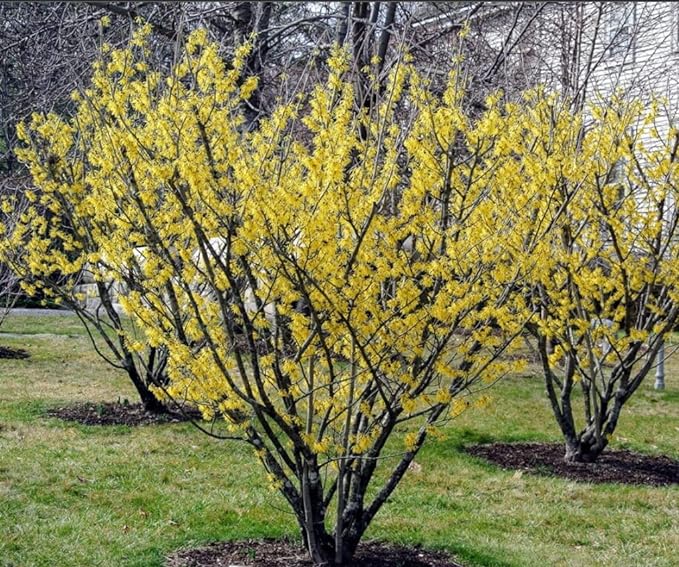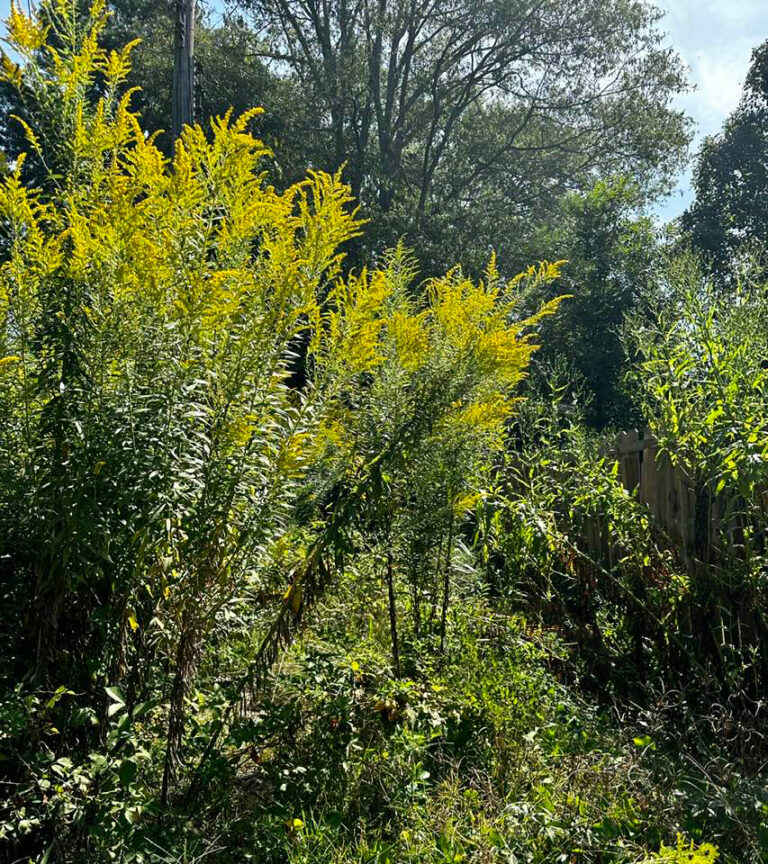
Goldenrod at the Very Back of Jacki Kellum Garden
God planted the above stand of goldenrod next to the very back of my garden. This stand is not actually in my yard. It is at the back of an untended area at the back of my neighbor’s yard. Because I don’t have much control over what happens to the plants above, I got permission and transplanted a few of the plants to my actual garden area. I want to create a natural hedgerow that will not be disturbed.
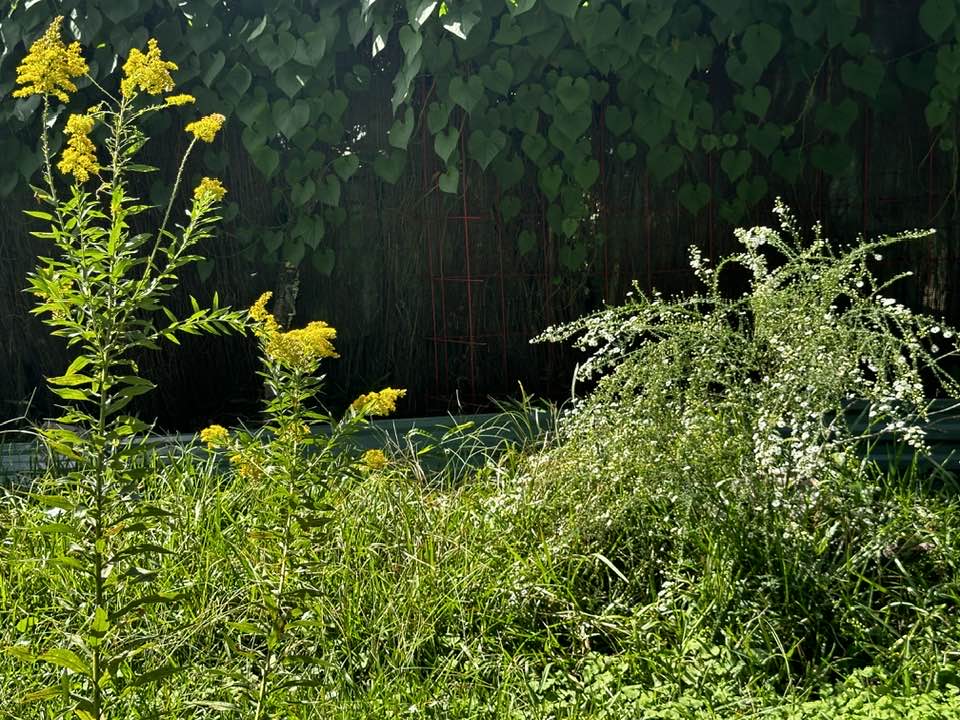 Goldenrod and Oldfield Aster Immediately Behind Morning Glory Vines in Jacki Kellum Garden
Goldenrod and Oldfield Aster Immediately Behind Morning Glory Vines in Jacki Kellum Garden
The other side of the above wall of morning glory vines is the background of a little area that I call my secret garden.
As soon as the morning glory vines wither, I plan to erect a bamboo screen to be a bit more of a screen when the annual vine is no longer there.
Because Goldenrod and Oldfield Asters are seasonal, I have planted them behind this area. The Goldenrod and Oldfield Asters will be ugly during the winter, and I want them to remain undisturbed–even when they are no longer pretty. My primary reason for creating my native hedgerow is to provide a natural area to shelter wildlife throughout the year.
What Is a Hedgerow?
“Hedgerows, also known as shelter belts or wind breaks, are living fences of trees, shrubs, groundcovers, vines, and other plants.” Mississippi Extension
Why Have a Hedgerow in Your Garden?
My hegerow is a place where all kinds of wildlife will have a safe and undisturbed place to live.
I plan to add numerous other native plants to this area. My hedgerow will be a haven for wildlife — as well as for native plants.
Allow Dead Limbs and Logs to Remain in Your Hedgerow
Importance of Dead Trees for Wildlife
“Dead trees (snags) and the subsequent downed log provide habitat for many living organisms, including fungi, mosses, lichens, invertebrates, birds, mammals, reptiles, and amphibians. The decayed surface of a snag provides a growth substrate for fungus, moss, and lichen. Invertebrates such as scorpions, moths, beetles, and ants use spaces under the bark as cover and as places for foraging. Birds use cavities for nesting or roosting and branches and broken tops are used as perches and to support nests structures.
“Primary cavity excavators, such as woodpeckers and nuthatches, need the soft wood of snags to create cavities for nesting.
Secondary cavity nesters, such as bluebirds, flycatchers, swallows, and small owls, nest in old abandoned holes that were created by primary cavity excavators.
“Cavities serve as mammal dens, food storage, and resting and escape cover. Bats roost in crevices created by lightning scars and under loose bark – an 18” by 24” piece of bark can support more than two hundred roosting bats!
“Once snags fall and become downed logs, the dead tree then becomes useful in other ways. Elevated areas on downed logs are used as lookouts and feeding sites for reptiles, birds and small mammals. The spaces between loose bark and wood are used as hiding and thermal cover by invertebrates, reptiles, and amphibians. Protected areas under the log are used as nesting cover by birds and as hiding and thermal cover by mammals. The root wad is also useful to birds for perching and nesting. Once the down log has further decomposed, the soft wood is used by squirrels for storing food and by mice for constructing burrows. The duff or sawdust is used by some birds for dusting and by deer and elk for resting.” United States Forest Service
A List of Plants to Grow in a Hedgerow:
Butterfly, Bird, and Bee Gardens – Plans and Plants – Consider Native Plants
4 – Season Garden: A Year of Garden Native Perennial Plants – Garden Calendar
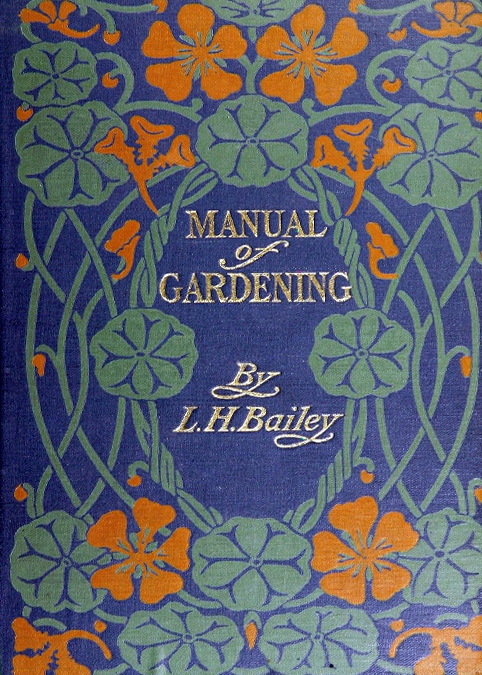
L. H. Bailey, Manual of Gardening – Published in 1910
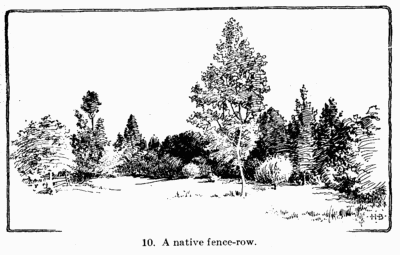
A hedgerow is a natural fence – Bailey
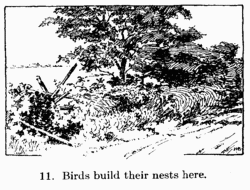
“Hedgerows are natural habitats for birds and other wildlife.” – Bailey
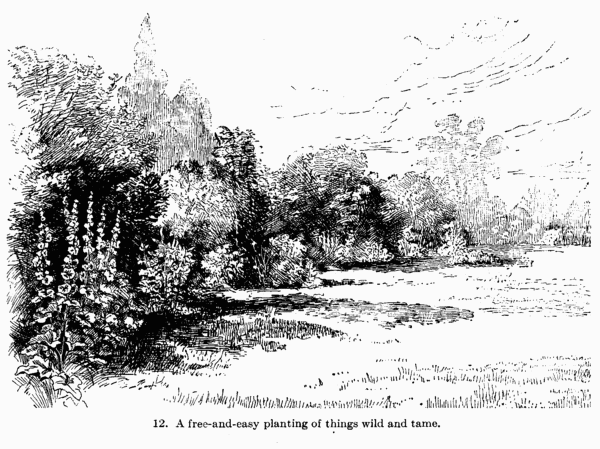
“A Hedgerow is a free-and-easy planting of things wild and tame.” Bailey
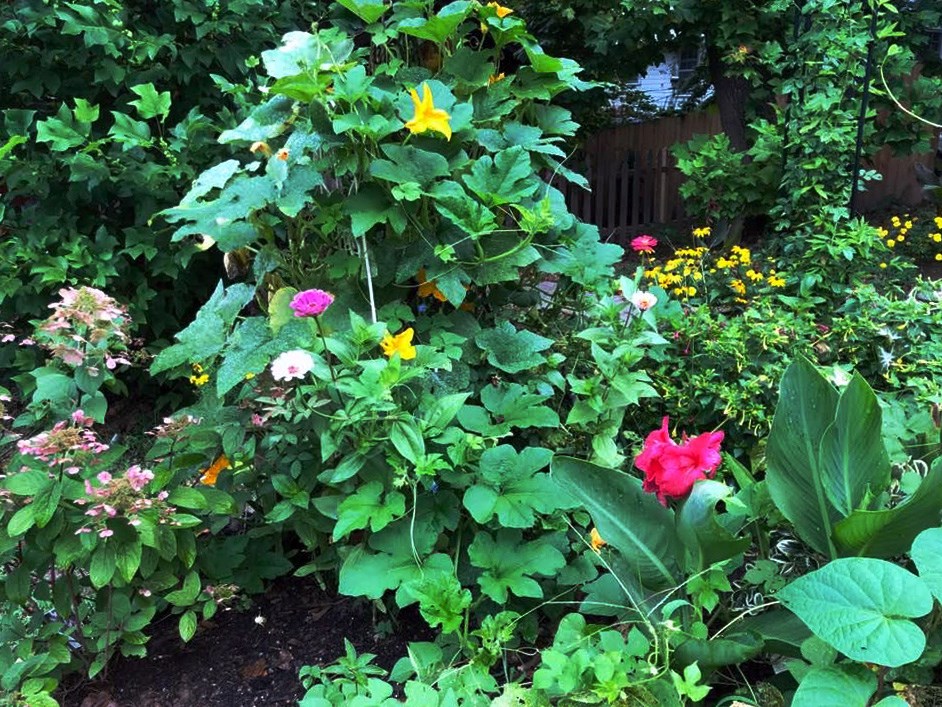
Flowers against a Natural Hedgerow in Jacki Kellum’s Garden – 2021
“One is attracted by the freedom of arrangement, the irregularity of sky-line, the bold bays and promontories, and the infinite play of light and shade. …
“It is not enough that trees and bushes be planted in masses. They must be kept in masses by letting them grow freely in a natural way. The pruning-knife is the most inveterate enemy of shrubbery … Bailey
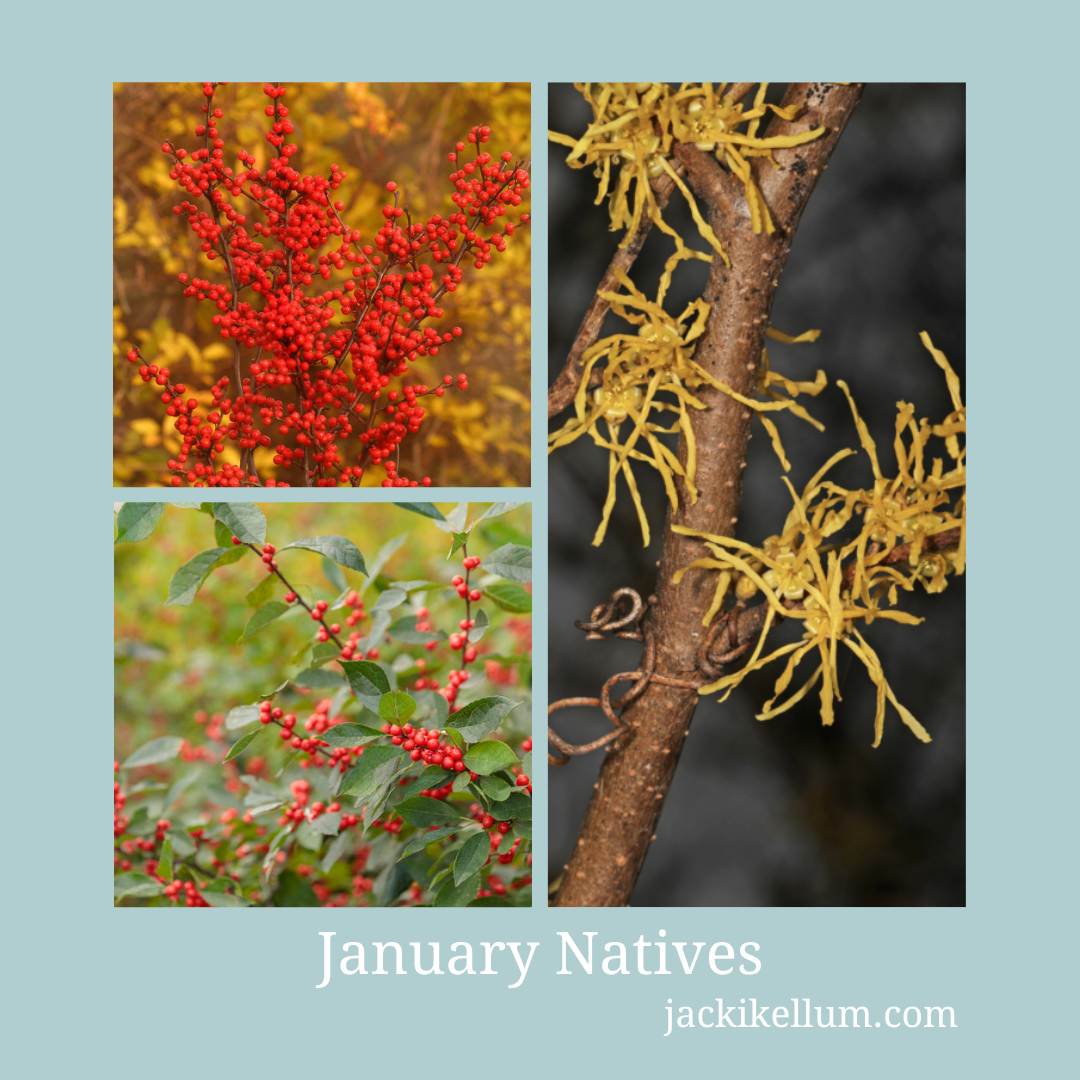
I have already planted a witch hazel tree in my hedgerow, and it is about 3′ tall now.
Witch Hazel – Image Credit Amazon
Witch Hazel
Hamamelis virginiana L.
Family: Hamamelidaceae
“Witch hazel is a large, deciduous shrub or a small tree that may reach 15 feet tall. It is found in a variety of rich woodlands and along stream banks. The large, scalloped leaves are attractive in summer and produce a yellow autumn color. The shrub has strap-like, yellow flower petals that are fragrant and bloom from fall into winter. Witch hazel has a spreading, sculptural form and is effective in the landscape as an understory specimen plant.” Mississippi State University Extension
I also planted winterberry trees, but I lost them. I’ll replant them.
Discover more from Jacki Kellum
Subscribe to get the latest posts sent to your email.
